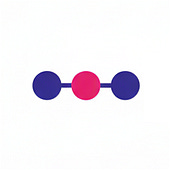My Summer 2025 Retrospective: A Guide to AI-Powered, Cloud-Native Java with Quarkus
Looking back at the articles I’ve written over this summer, I see two massive waves converging: the universal shift to cloud-native architectures and the explosive arrival of generative AI. It's an exciting time to be a developer, and I've spent a lot of my time exploring how the Java ecosystem, specifically with Quarkus, is not just keeping up but leading the charge.
I’ve had many of you ask for a reading list or a path through the content I’ve published. So, I’ve curated a selection of my posts from this year into a guide. This is for anyone looking to build the next generation of intelligent, high-performance applications with the language and platform we know and love.
The AI Revolution: Integrating Intelligent Services with Quarkus
Let's start with the hottest topic. Getting AI into a Java application used to be a heavy lift, but frameworks like LangChain4j have changed the game. Here’s how I’ve been exploring it.
- Getting Started with Local AI: My hands-on tutorial shows you how to connect Quarkus with LangChain4j and a local AI model using Ollama.
- A Clear Learning Path: To provide a structured approach, I laid out a learning path for mastering AI development with Java and Quarkus.
- A Fun, Practical Example: To show what's possible, I wrote about creating a meme generation service using Quarkus, Jackson, and LangChain4j.
- Making AI Enterprise-Ready: AI calls can be flaky. I tackled this head-on in a post about using Quarkus Fault Tolerance to build resilient AI services.
Building Bulletproof, Cloud-Ready APIs
An intelligent application is only as good as its foundation. For cloud-native systems, that means building APIs that are fast, secure, and resilient. A significant portion of my writing this year focused on these enterprise-grade fundamentals.
Performance & Resilience- I wrote a comprehensive guide on boosting API performance with caching, rate limiting, and fault tolerance patterns in Quarkus.
- You can learn to design modern APIs with my OpenAPI tutorial, which uses a coffee shop API as its example.
- Testing is non-negotiable, so I covered advanced API testing techniques using REST Assured, Pact, and Jqwik.
- For those coming from Spring, I wrote a direct comparison between Quarkus's testing and Spring's MockMvc.
- To help secure your applications, I created a tutorial on implementing TOTP/TAN-based two-factor authentication.
- For enterprise environments, I also detailed how to integrate Quarkus with LDAP for authentication.
Modernizing Your Java Stack: From Legacy to Quarkus
Many of us are working with existing applications. The journey to a modern stack is a common challenge, so I wanted to share some of my experiences and best practices for migrating and maintaining a clean architecture.
- A Practical Migration Guide: I documented the process of migrating from Spring HATEOAS to Quarkus to handle hypermedia controls.
- Maintaining Architectural Integrity: To prevent your application from becoming a "zombie app", I showed how to use ArchUnit to enforce architectural rules, like the BCE pattern, and even how to create a business score to measure application health.
Conclusion: What Will You Build?
Compiling this list has been a fantastic reminder of how vibrant and innovative the Java space is right now. With Quarkus, we have a framework that gives us incredible developer productivity, top-tier performance for the cloud, and a seamless on-ramp to the world of AI.
I hope this guide gives you a clear path to follow. Pick a post that sparks your interest and start building. I'm excited to see what you create. Let me know in the comments which one you're starting with!


Post a Comment